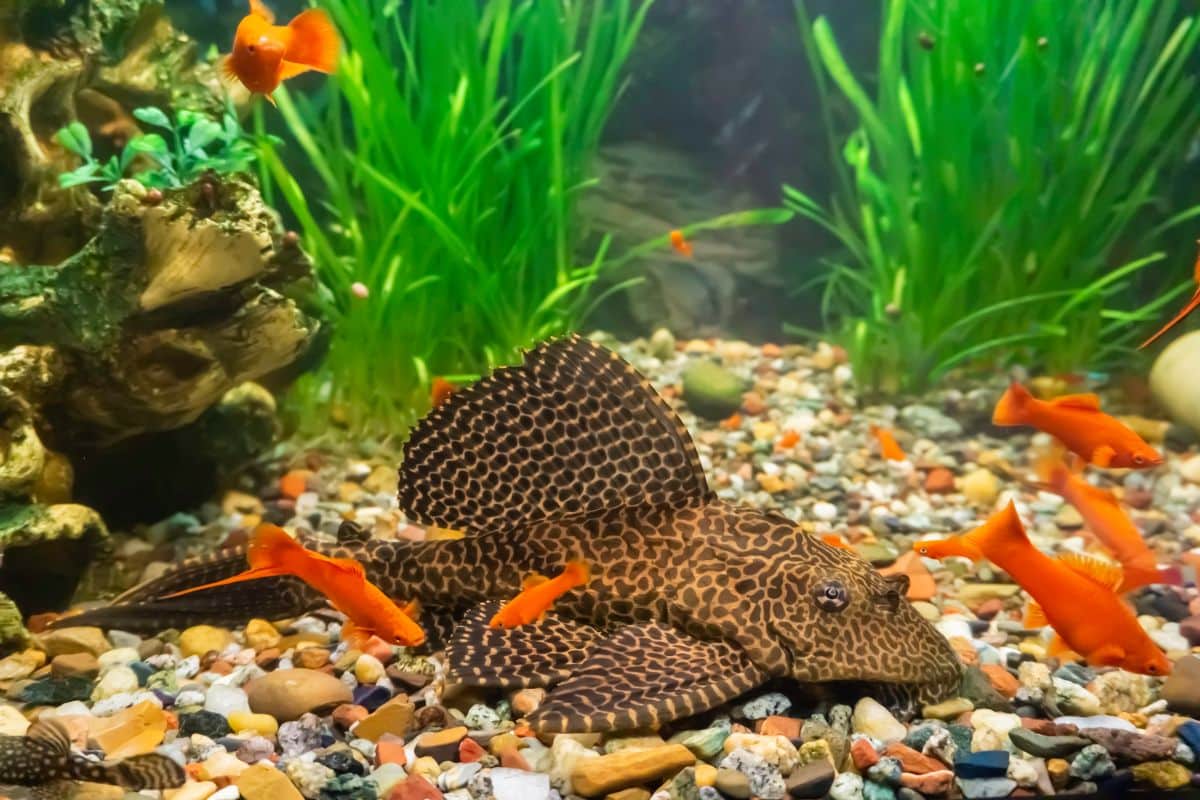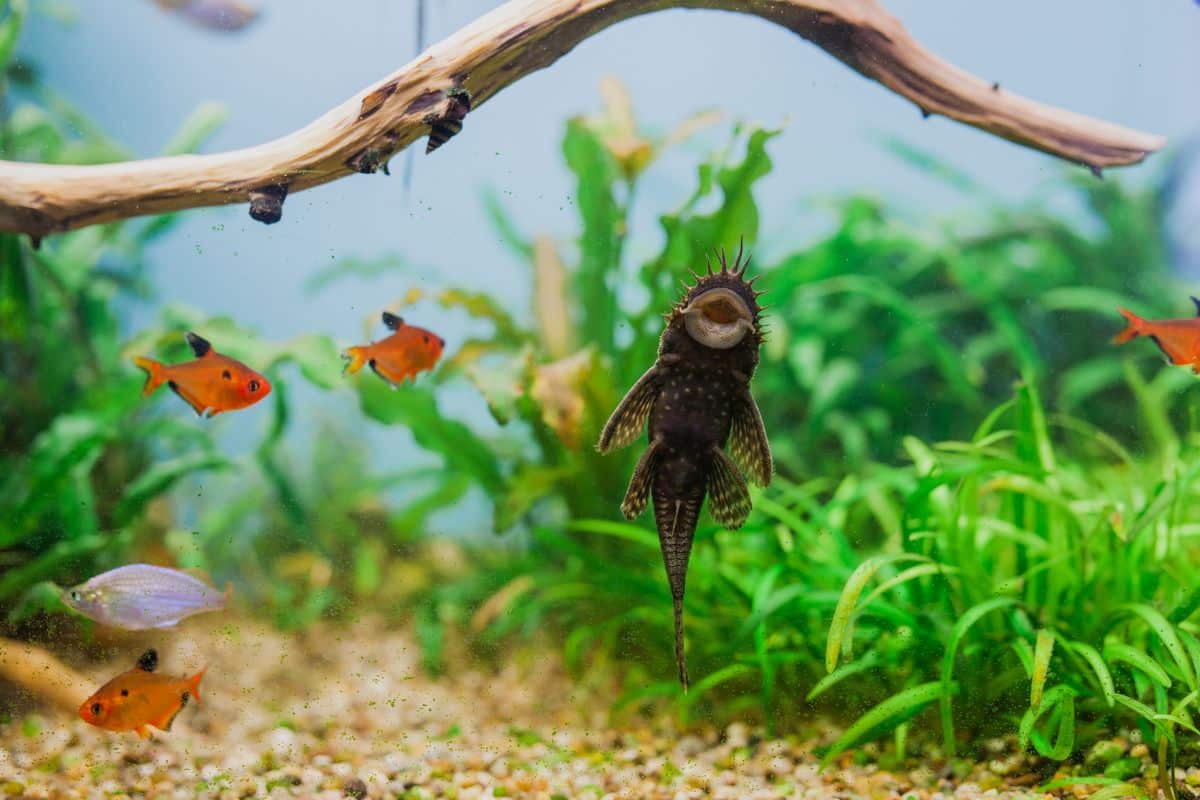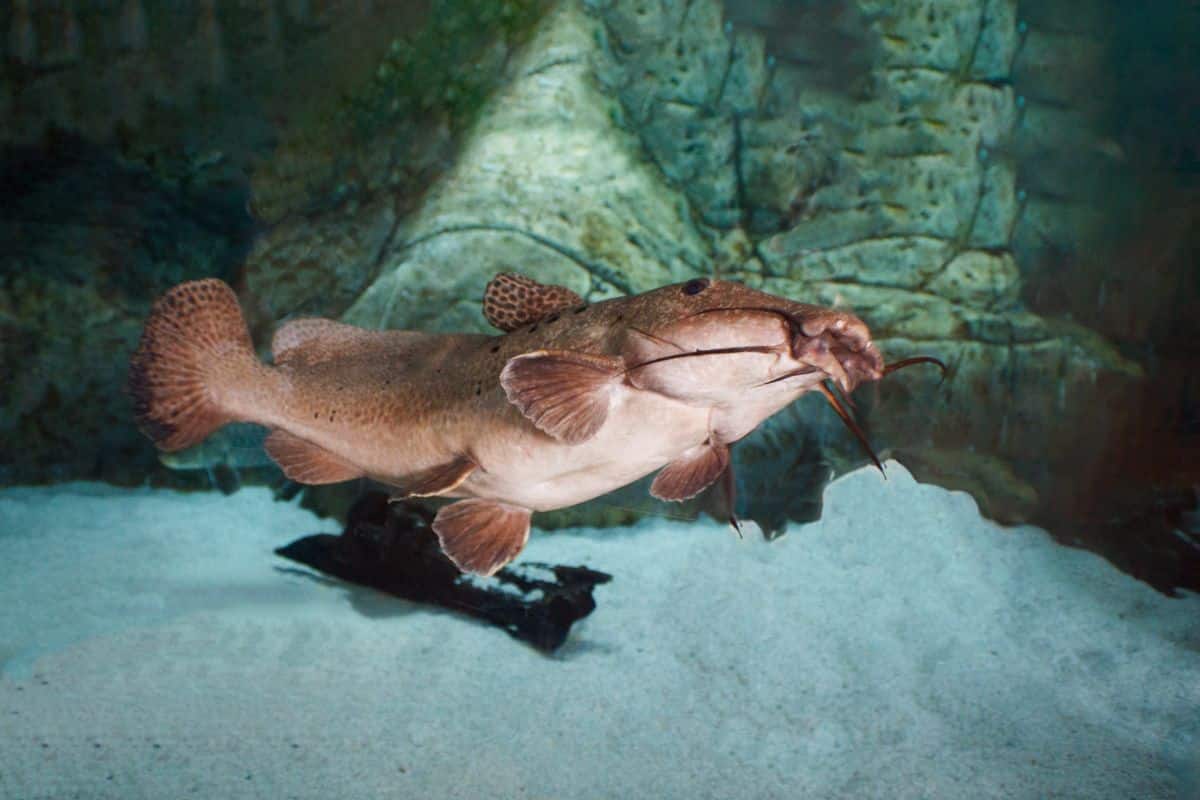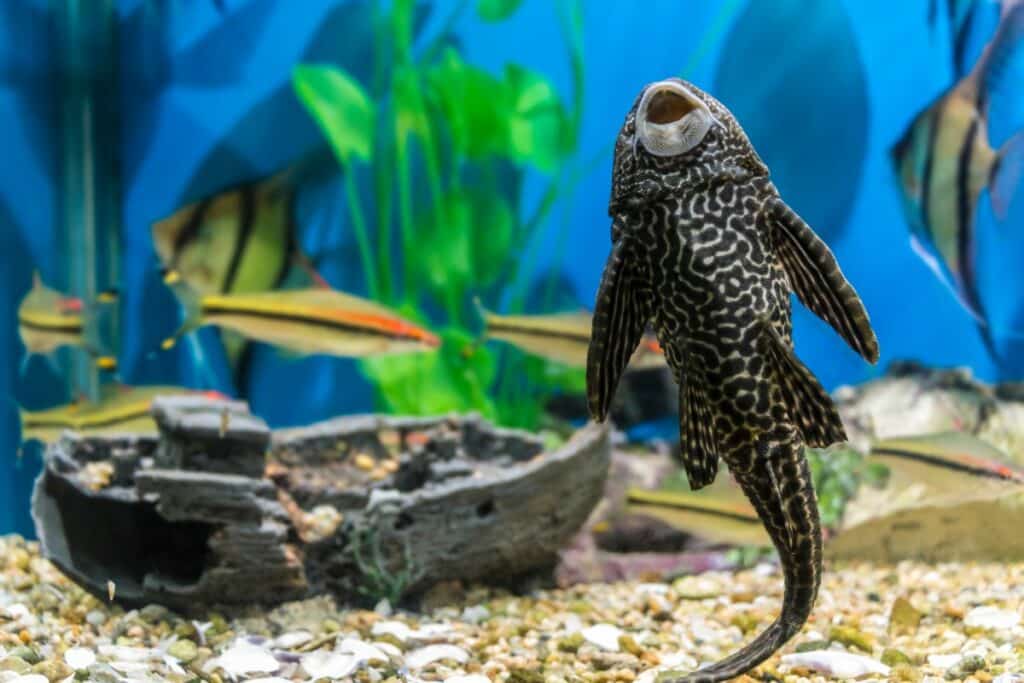the essentials in brief
There are different types of catfish, including the European catfish, the giant catfish and the catfish. Information on the appearance of creatures can be found here...
Catfish in the aquarium can be fed a variety of foods, including live food such as worms or shrimp, but also flake food, granules and vegetables. You can find out more about posture here...
Catfish species such as the antennae catfish (Ancistrus), the armored catfish (Corydoras) or the thorn-eyed catfish (Synodontis) are suitable for an aquarium, as they are usually peaceful and can be kept well in smaller bodies of water.
catfish are fascinating fish. They come in many different types and sizes. A popular aquarium dweller, they offer a unique and interesting addition to other fish species. With their distinctive features and often quiet character, they attract the attention of aquarists around the world.
In this article you will receive information about the appearance, character and attitude of catfish.
Appearance

The catfish, too Silurian called, is a family of fish, the one variety of species includes. Catfish appearance can vary greatly depending on the species, but there are some common traits shared by many species.
Generally, catfish have one elongated, cylindrical body with a broad head. Their bodies are covered with a tough mucous membrane that protects them from injury and disease. The coloration of catfish varies greatly, ranging from solid gray or brown to vivid patterns and spots of various colors.
Most catfish own barbels, which are arranged like thread-like outgrowths on the snout. These barbels are equipped with vibrissae and are used for finding prey and exploring the environment. The number and length of the barbels can vary from species to species.
Another striking feature of many species of catfish is their large, flattened head. They often have powerful jaws with sharp teeth that allow them to crush and eat their food. Some species, like the catfish, also have clearly visible "feelers" on their heads, which have given them their name.
Additional information: The size of the catfish varies greatly depending on the species and habitat. There are small species, only a few centimeters long, while other species can reach considerable sizes. The giant catfish (Silurus glanis), for example, can grow to be over two meters long and weigh several hundred kilograms.

beings
The catfish family (Siluridae) is very diverse and varies from species to species. However, there are some general characteristics that many catfish share.
Catfish are usually nocturnal fish with a rather calm and reserved character. They are often ground dwellers and prefer hiding places such as caves, roots or crevices in rocks. There they stay during the day and rest. At dusk and at night they become more active and search for food.
Many species of catfish are solitary and territorial, especially when it comes to their hiding spots or their food resources. They can aggressively defend their territory against conspecifics. But there are also catfish species that live in groups and behave harmoniously in their schools.
Catfish are not usually fast swimmers, but rather move leisurely and with a certain Suppleness through the water. They use their powerful pectoral fins to move and explore their surroundings. Many catfish also have a special ability to adapt to different water conditions, both in still and flowing water.
Catfish are usually omnivore. They eat a wide range of food such as insect larvae, crustaceans, snails, small fish and plant matter. Some species are specialized and prefer certain prey items, while others will accept a broader range of diets.
Additional information: Catfish are generally peaceful in their behavior towards other fish species. They are not known to actively hunt or threaten other fish. In aquariums, however, territorial fights can occasionally occur, especially if there are not enough places to hide and retreat.
posture, attitude
There are different species of catfish that are well suited for keeping in an aquarium. Some types are presented below and you will receive general information on proper care:
Long-tailed catfish (Ancistrus sp.): Long-tailed catfish are popular and robust catfish that come in many different color variations. They are relatively small and peaceful and can therefore be kept well in community tanks. An aquarium of at least 80 liters is recommended. Rodent catfish need places to hide, such as caves, roots or clay tubes, in which they like to rest. They feed on algae growth and plant material, but also on commercially available catfish food.
Armored catfish (Corydoras sp.): Armored catfish are bottom dwellers and are well suited for keeping in community aquariums. There are many types and varieties to choose from. Mailed catfish are sociable fish and should be kept in groups of at least 4-6 animals. An aquarium of at least 60 liters is recommended. Armored catfish need a sandy substrate. They like to rummage in it for food. You can feed the animals with flake food and special bottom food for catfish.
Thorny-eyed catfish (Synodontis sp.): Thorny-eyed catfish are interesting catfish with a striking appearance. They are generally peaceful but territorial, which is why it is important to provide them with enough hiding places and retreats in the aquarium. An aquarium of at least 100 liters is recommended for keeping them. Thorny-eyed catfish also need a varied diet with flake food, granules, frozen food and plant material.
When keeping catfish it is important that Set up and care for the aquarium according to the needs of the fish. A good filter and regular water changes are necessary to maintain good water quality. The right temperature and water parameters should match the specific needs of each catfish species.
Catfish are generally omnivores and can with a Combination of flake food, granules, frozen food such as mosquito larvae, Artemia and plant material to be fed. It is advisable to adapt the feeding to the specific needs of the catfish species in question.
Note: Observing the fish and regularly checking their health is important in order to identify possible problems at an early stage. A balanced diet, a suitable environment and careful maintenance will help ensure that the catfish in your aquarium are happy and healthy.

Lots of great catfish species
All in all, catfish are fascinating fish that can enrich any aquarium. Their variety of species, their interesting appearance and their often calm nature make them popular pets. When caring for catfish, it's important to consider each species' specific needs, including the right environment, feeding, and care.
By creating an optimal habitat, catfish can thrive happily and healthily in the aquarium. With their unique looks and interesting behavior, catfish make a wonderful addition to aquarium enthusiasts and always provide a fascinating viewing opportunity.


